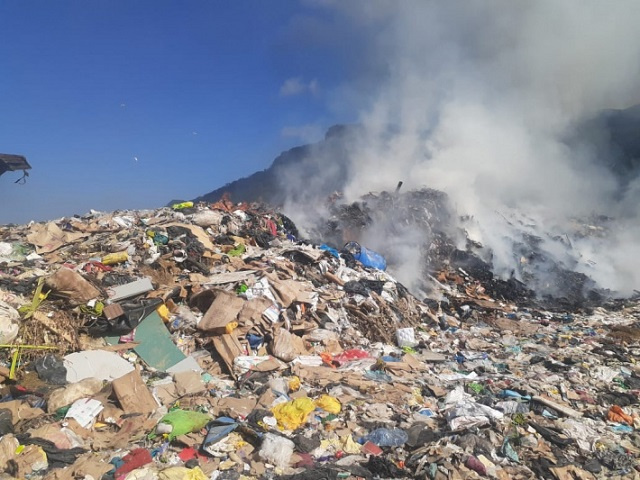COP27: Seychelles joins Global Methane Pledge with 47 countries

Joubert told SNA that in Seychelles, landfilling is the biggest contributor to methane emissions.
Seychelles joined 47 countries to support the Global Methane Pledge at COP27, vowing to cut down on the island nation's methane gas production significantly by 2030.
Launched by the European Union and the United States at COP26, the pledge seeks to cut the level of anthropogenic methane emissions by at least 30 percent by 2030 from the 2020 levels.
Taking this action is considered to help reduce global warming as methane gas is one of the biggest contributors to the heating of the Earth's surface.
The pledge brings together around 150 countries.
The special adviser to the Ministry for Agriculture, Climate Change and Environment, Wills Agricole, said that following the signing of the Global Methane Pledge, Seychelles is now tasked with developing its national methane action plan before COP28 in the United Arab Emirates next year.
Methane - a naturally occurring gas - is also derived from a range of nature-related human activities - livestock farming, fossil fuel extraction, and certain agricultural practices.
The Minister for Agriculture, Climate Change and Environment, Flavien Joubert, shared with SNA that "in Seychelles, landfilling is our biggest contributor to methane emissions."
"Waste-to-energy will help us in a very big way, as we will be able to move away from landfill. If we are able to move away from landfilling or better control it, we will be able to reduce our methane emissions significantly on all three main islands. It will also solve other problems - waste, energy, and lack of land for more landfills," said Joubert.
Meanwhile, the principal secretary for climate change and energy, Tony Imaduwa, said that the country is currently looking into this type of renewable green energy that will greatly complement solar energy being integrated into the national electricity grid.
"Renewable energy such as solar PV has its challenges when it comes to integrating it to the grid. As such, we are looking to other forms such as waste-to-energy. We are holding this discussion with IFC [the International Finance Corporation] to do a preview study," said Imaduwa.
He added that waste-to-energy can provide a higher percentage of green energy into the grid.
"Based on initial calculations, we can get about 5 megawatts but this will be more reliable as it will be able to provide us with energy for 24 hours making the percentage contribution to the grid higher - at around 4 or 5 percent penetration," he said.
Currently, Seychelles' green energy production stands at 5 percent of the total electricity production.





